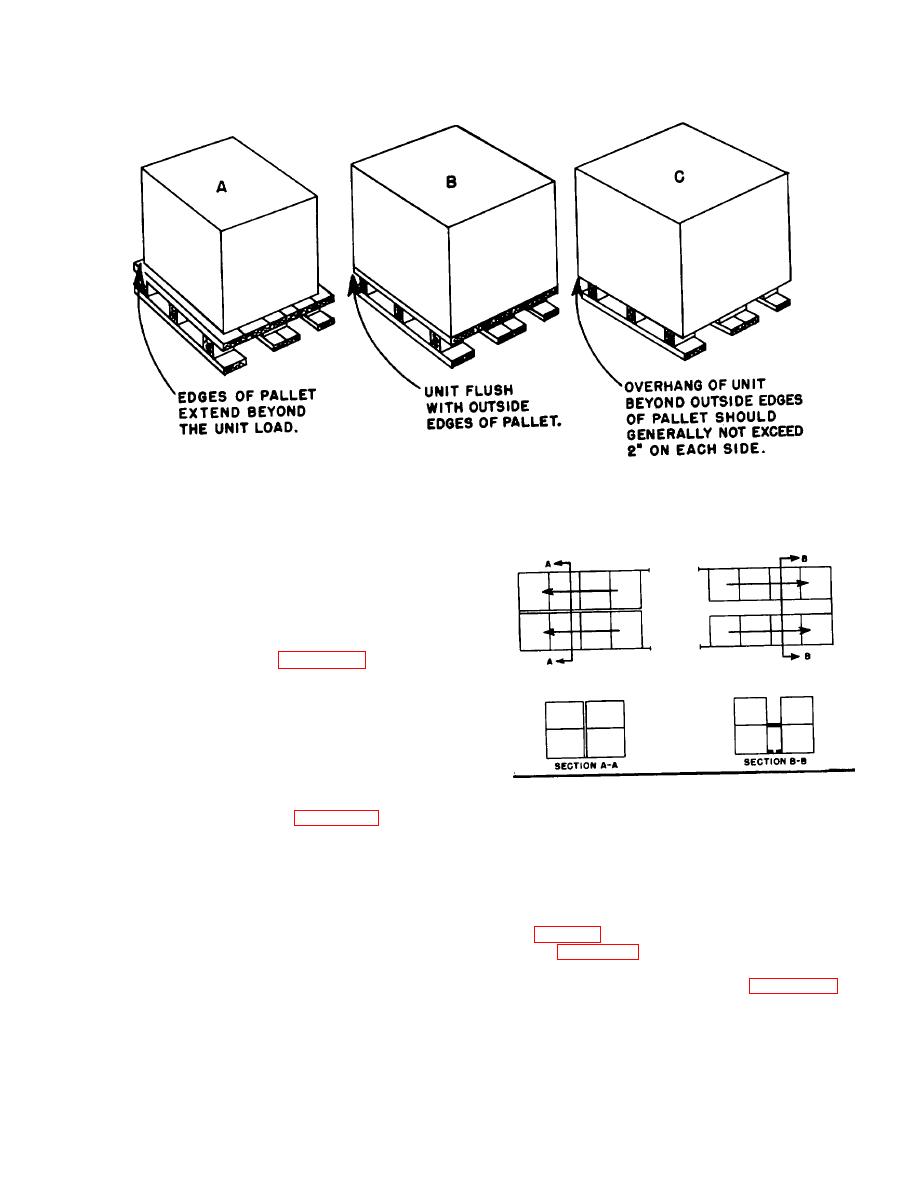 |
|||
|
|
|||
|
|
|||
| ||||||||||
|
|
 TM 38-400/NAVSUP PUB 572/AFMAN 23-210 MCO 4450.14/DLAM 4145.12
Figure 3-20. Prevention of chafing.
d. Loading factors.
(1) Tight loading. Pallets should be placed
tightly in both ends of the car. Generally, for practical
purposes, it is necessary to have some side clearance
space of approximately 1 to 2 inches between pallets in
order to maneuver the pallets into place by the forklift
truck. As shown in section AA, figure 3-23, the total
crosswise slack space between pallets and sidewalls in
the car is relatively small (approx 6 in) and, ordinarily,
would not require any additional crosswise bracing.
(2) Side shifting. In order to prevent side
shifting of load and with a possible derailment of car in
transit, circular 42F, Operating-Transportation Division
AAR, rule 5(C) requires "In boxcars, lading must be
Figure 3-21. Floor supports.
secured to prevent tipping or moving towards car sides
where the vacant space across car (figure 3-23, section
(3) Doorway space.
The loading at the
B-B) exceeds the following:
doorway is finished off with proper bracing to secure and
(a) A total of 18 inches between lading
hold the load in place during transit. The doorway
and car sides.
section of the load is a critical area in which to work, as
(b) Vacant cross car space of less than
space is needed to maneuver the forklift trucks or other
18 inches as may be specified in pamphlets covering
mechanical equipment which might be used (parts A
methods for loading, bracing, and blocking carload
and B, fig 3-24). For example, the space C, indicated
shipments of individual commodities."
on part A, figure 3-24, at the doorway is braced securely
by means of a wooden center gate D or steel strap
anchored gate E indicated on part B, figure 3-24. By
this method, the bracing can be removed at destination
and with this work space in the doorway section, the car
can be unloaded without difficulty.
3-55
|
|
Privacy Statement - Press Release - Copyright Information. - Contact Us |